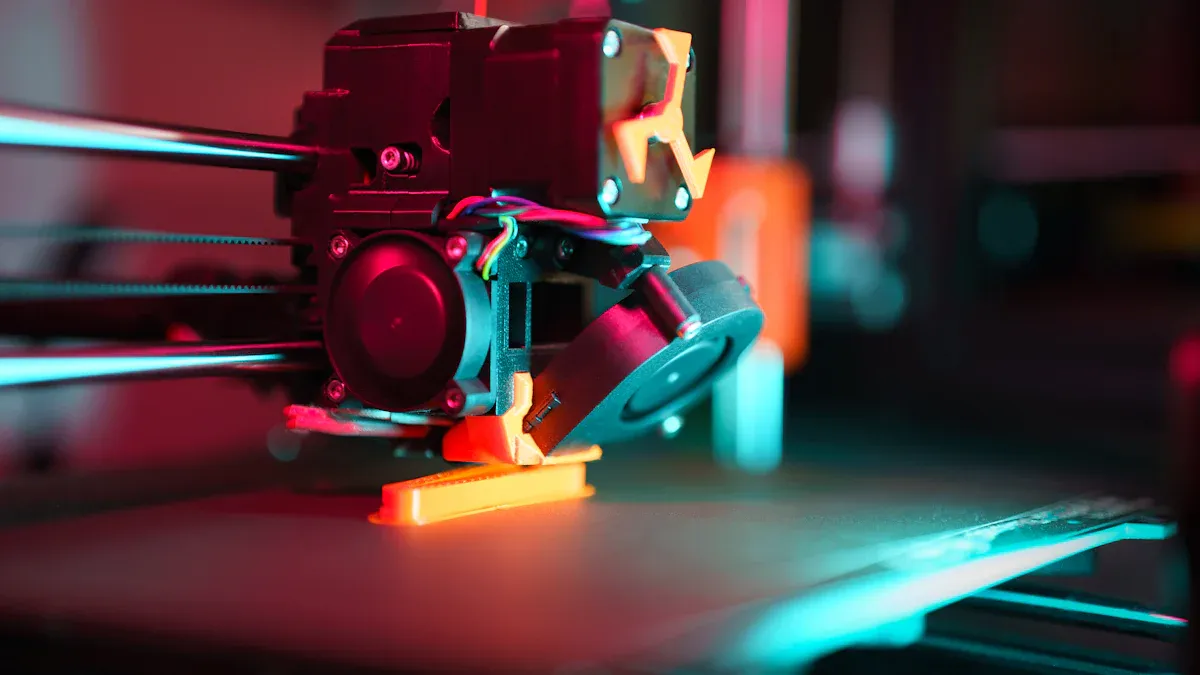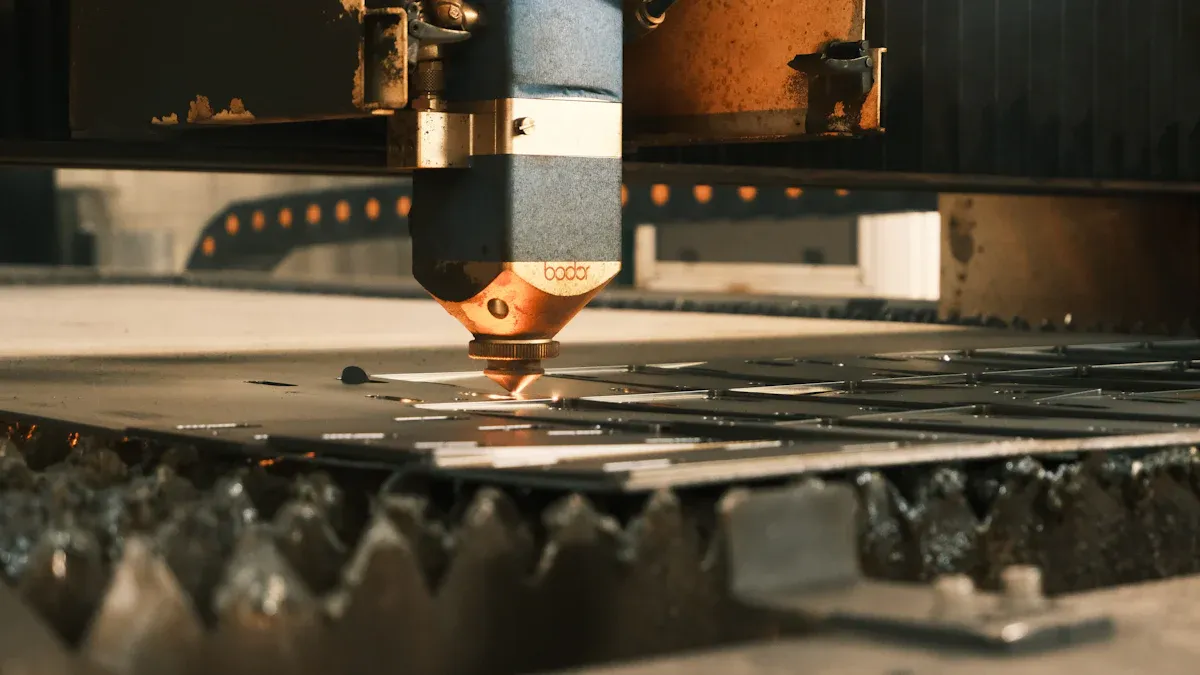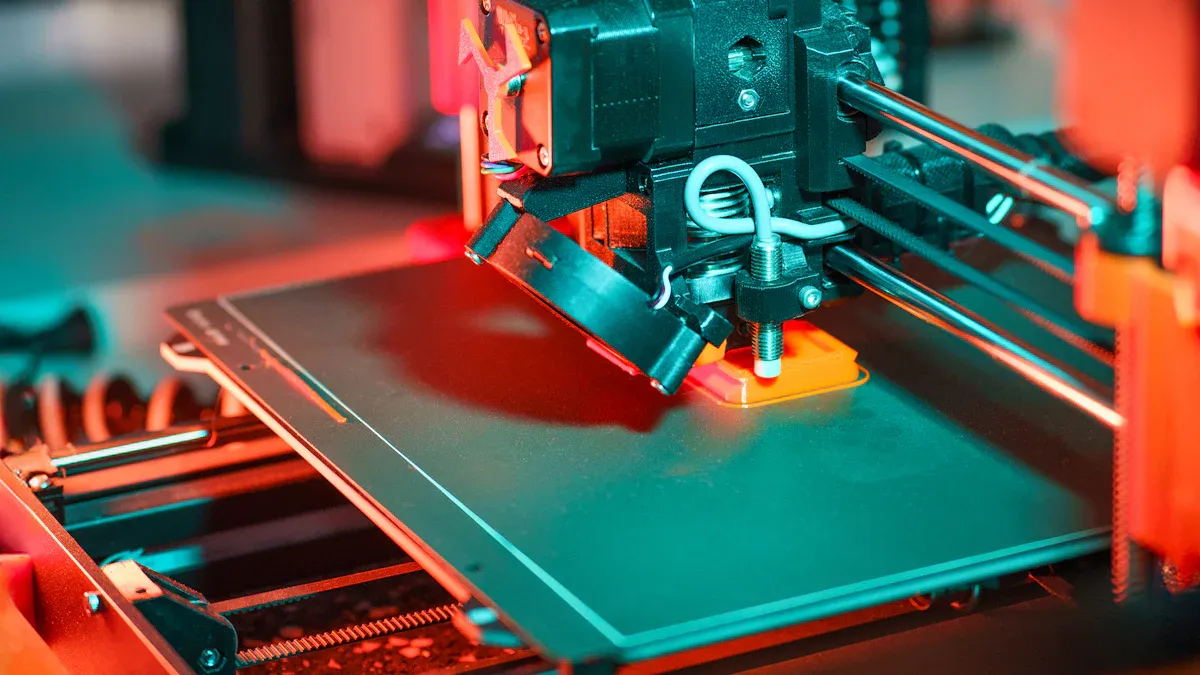Key Factors in Sourcing Small Batch Nitinol Tubing for Prototyping

When you do research and development, you need good materials. These materials must handle quick changes and tough rules. Getting good Small Batch Nitinol Tubing for R&D helps your project do well. Suppliers who know a lot and give strong materials help you make real prototypes. You need partners you trust who know you want fast delivery and exact details.
Key Takeaways
Nitinol tubing is tough and bends easily. It goes back to its shape. This makes it great for prototypes that must bend or move. - You need suppliers who know about small batch needs. Fast delivery helps you avoid waiting. This keeps your project moving. - Pick suppliers with good quality checks and certifications. This makes sure your tubing is safe and meets rules. - Talk clearly with your supplier and give them details. This stops mistakes and makes things faster. - Plan early if you want to make more later. This keeps costs the same and stops supply issues as you grow.
Why Nitinol for Prototyping

Unique Properties
Nitinol is special for prototyping because it is strong and flexible. It also has memory, so it can go back to its old shape. You can count on its superelasticity and shape memory effect. These help you make things that bend or stretch but return to normal. This is good for prototypes that need to change shape or handle stress.
Here is a table that shows Nitinol’s main properties:
Property/Process | Description/Value |
|---|---|
Composition | About 55% nickel and 45% titanium |
Tensile Strength | 500 MPa to 900 MPa |
Strain Capability | Up to 6% superelastic deformation |
Fatigue Life | Up to 10 million cycles |
Testing Methods | DSC and Bend Fatigue Resistance tests |
Manufacturing Processes | Cold working and heat treatment for optimal effects |
Advanced Fabrication | Laser cutting and 3D printing for complex shapes |
Dimensional Tolerances | As tight as ±0.0005 inches |
Tip: You can use electropolishing and passivation to make Nitinol safer for the body. These steps also stop nickel from coming out, which is important for medical prototypes.
These properties help you build prototypes that are exact and last a long time. Nitinol can be used over and over without losing strength. This gives you trust in your R&D work.
R&D Applications
You can use Nitinol in many R&D projects. It is great when you need a material that changes shape or fits new spaces. In medical device prototyping, Nitinol’s superelasticity helps make stents and heart valves. These can fit different blood vessel sizes. Drug delivery systems, like the LiRIS intravesical system, use Nitinol wires. These wires change shape at body temperature to control how medicine is given. These features help you design devices that work well inside the body.
Some common R&D uses are:
Medical implants like vascular stents, heart valves, and orthopedic anchors
Devices for less invasive surgeries that need to return to shape
Prototypes for fixing art or monuments that can be undone
Drug delivery systems that use Nitinol’s shape memory to control when and where medicine goes
Nitinol’s high fatigue resistance and low corrosion rates help your prototypes last longer. This is true even in tough places or after many uses. Picking Nitinol gives your R&D projects a strong base for new ideas and trust.
Small Batch Nitinol Tubing for R&D

Sourcing Challenges
When you start a prototype project, you face many problems getting Small Batch Nitinol Tubing for R&D. You need tubing that meets strict rules for medical and important uses. Not every supplier can give you the right quality or accuracy. Some suppliers, like Vascotube and Confluent Medical Technologies, focus on medical-grade tubing. They know why biocompatibility and exact sizes matter.
You often need special designs with very tight sizes. For example, you might need tubing with a 1 mm outer diameter and a 0.1 mm inner diameter for brain work. Regular tubing will not fit these needs. Custom tubing makes sure your prototypes work as planned, especially when you need certain flow rates or strength.
Fast delivery is another big problem. You have to move quickly from idea to prototype. Many developers say delays in getting tubing can slow down the whole project. Here are some numbers that show how sourcing problems can affect your timeline:
Over 62% of people say shorter timelines will really affect reaching goals during early and late prototype stages.
82% are looking for ways to speed up product development.
65% say they must make products faster to stay ahead.
Most say they still have sourcing problems, like material shortages and supply chain issues, which slow things down.
78% mention customer needs and 65% mention worker problems as big reasons that affect development.
More than 60% of product makers say tight deadlines and pressure to move faster will strongly affect prototype goals in the next five years.
Note: Picking a supplier who knows about Small Batch Nitinol Tubing for R&D can help you avoid common mistakes. Companies like Chamfr give you quick access to ready-made tubing, which can help you start your prototypes faster.
Supply Chain Stability
You need a steady supply chain to make sure your Small Batch Nitinol Tubing for R&D always meets your project’s needs. A steady supply chain helps you keep quality and repeat results, especially for custom tubing in medical devices. Making NiTi alloys with 3D printing needs careful control of laser power, scanning speed, and other settings. This control lets you make medical parts like self-expanding stents and bone scaffolds with the right strength and safety.
Custom tubing sizes are important. For example, tubing with a 1 mm outer diameter and a 0.1 mm inner diameter can give flow rates that work for brain use. If you use regular tubing with a bigger inner diameter, the flow rate gets too high, so it will not work for your design. Making tubing the same way every time and having a steady supply chain makes sure your prototypes work as planned.
Resonetics is known for its ISO 9001:2015 and 13485:2016 certified manufacturing. They are experts in automated reagent placement and making microfluidic devices. Their systems can deliver very small amounts, from nanoliters to microliters, with great accuracy. This level of control and certification shows why you need a steady supply chain for Small Batch Nitinol Tubing for R&D.
Tip: Work with suppliers who promise the same quality and on-time delivery. This helps you avoid delays and makes sure your prototypes meet all design and rule needs.
Supplier Selection
Expertise and Capabilities
When you pick a supplier for Small Batch Nitinol Tubing for R&D, look at their team and skills. Suppliers with smart technical teams help you make better prototypes. Their experts use computer models to choose the best stent shapes and tubing sizes. They also help pick the right materials. This lets you build prototypes that last longer and work well.
Using computer models helps you test designs before making them. This saves both time and money.
Technical staff know how to use special steps like heat treatment and surface finishing. They also do shapesetting. These steps control how a device bends or fits in the body.
Experts know a lot about Nitinol’s properties. They can fix problems, like stopping cracks or making sure the device goes back to its shape.
Virtual and real-life tests work together. Experts use both to check if your design will work.
You should also see if the supplier can help you make more than one prototype. Good suppliers help you make bigger batches without losing quality.
Quality and Compliance
Quality and following rules are very important for Nitinol tubing, especially for medical devices. You want a supplier who follows strict rules and keeps good records. The table below shows some main rules that top suppliers meet:
Compliance Aspect | Specification / Frequency |
|---|---|
Certification Standard | ISO 13485:2016 |
Wall Thickness Tolerance | ±0.01 mm |
Surface Roughness (Ra) | ≤ 0.1 μm |
Laser Cutting Dimensional Tolerance | ±0.005 mm |
Tube Drawing Wall Thickness Tolerance | ±0.0075 mm |
Microstructure Defects (Raw Material) | Tiny holes ≤ 5.4 μm, particles ≤ 0.5% |
Microstructure Defects (Finished Tube) | Grain size grade 7, holes ≤ 0.2%, particles ≤ 0.2% |
Heat Setting Temperature Range | 250 °C to 600 °C |
Heat Setting Duration | 1 to 120 minutes |
Risk Management | Mandatory risk assessment and statistical sampling |
Documentation & Traceability | Detailed batch records, material origin, process history |
Audits | Initial certification (2 stages), annual surveillance, triennial re-certification, internal and supplier audits |
Quality Control Tests | Fatigue testing, radial force assessment, SPC monitoring |
Suppliers use many ways to check quality. They watch the temperature closely during shape setting. Special sensors help make sure the tubing gets the right heat. They measure electrical resistance to see if the tubing is ready. They test how well the tubing bends and returns to its shape. Non-destructive tests, like eddy current testing, help find cracks or weak spots. These steps make sure your prototypes are safe and work well.
Transparency and Support
You need a supplier who talks to you clearly and often. Good communication helps you get the tubing you need on time. When your engineers work with the supplier’s technical team, you get faster answers and better help. This teamwork helps you get custom tubing that fits your project, like special hardness or strength.
Clear communication helps you find problems early. You can fix design issues before they slow you down. This saves time and money. Suppliers who offer design for manufacturability (DFM) services help you make better choices and avoid mistakes. They also help you balance supply and demand, so you do not run out of tubing or wait too long for new batches.
Tip: Pick suppliers who answer your questions fast and help with custom requests. This support makes your prototyping easier and helps you go from idea to finished product faster.
Best Practices
Clear Requirements
You should always start with clear project needs. Write down the size, shape, and finish you want for your tubing. Share your drawings and details with your supplier. This helps stop mistakes and saves time. If you need special things, like laser-cut shapes or shiny surfaces, say so early. Talking clearly helps your supplier know what you want and give you the right tubing.
List all important sizes, like inside and outside diameters.
Tell them the Nitinol grade and any needed certificates.
Ask for samples if you want to check quality first.
Tip: Use a checklist to make sure you do not miss anything before you order.
Managing Timelines
You need to watch your project schedule closely. If you wait too long for Small Batch Nitinol Tubing for R&D, your project can slow down. Work with suppliers who ship fast and keep you updated. Ask them to tell you how things are going. This helps you find problems early and change your plans if needed.
Set clear due dates for each step, from order to delivery.
Pick suppliers who usually ship on time.
Add extra time for delays, especially for custom orders.
If you need tubing fast, find suppliers who have it ready to ship. This helps you start your prototype sooner.
Planning for Scale-Up
When you go from making one prototype to many, you need a good plan. Many companies use factories in Asia or Eastern Europe to make more and save money. Long-term deals and owning more of the process help keep prices steady, even if the market changes. Companies like Resonetics, who have a big part of the market, set the rules for quality and delivery.
New factories, like the one Resonetics opened in Costa Rica, can make shipping faster and handle more orders.
New machines, like lasers and grinders, help make tubing more exact and faster.
Making many different types in small amounts can cost more, so work with partners who help balance price and custom needs.
Always check that your supplier follows the rules and makes safe tubing.
Remember: Planning ahead for bigger orders helps you avoid supply problems and keeps your project moving.
You can do better with your prototypes if you pick suppliers who know a lot, make good products, and talk clearly. Try to follow these steps:
Write down exactly what you need for your tubing.
Make sure the supplier has the right certificates and checks their quality.
Find out how long it takes to get your order and if they help with special requests.
Think ahead about what you will need if you want to make more later.
Remember: Good partners help you go from an idea to a finished prototype without worry.
FAQ
What is the minimum order size for small batch Nitinol tubing?
You can usually buy just one or two meters for testing. Some suppliers let you order even less. Always ask your supplier what their smallest order is.
How fast can I get custom Nitinol tubing for my prototype?
How long it takes depends on your design and the supplier’s plans. Many suppliers send out standard sizes in a few days. Custom tubing might take two to four weeks. Ask your supplier how long it will take before you order.
Do I need special tools to work with Nitinol tubing?
You need simple metal tools to cut and shape the tubing. For harder jobs, like laser cutting or heat setting, you may need special machines. Your supplier can help or tell you who can do these jobs.
How do I ensure my Nitinol tubing meets medical standards?
Always ask for papers like ISO 13485 certification and proof of where the material came from.
Check test results for safety in the body and for strength.
Work with suppliers who know how to make medical devices.
See Also
Choosing The Ideal Nitinol Tubing Supplier For You
A Detailed Process For Selecting Proper Nitinol Tubing
The Manufacturing Process Of Nitinol Tubing For Medicine

